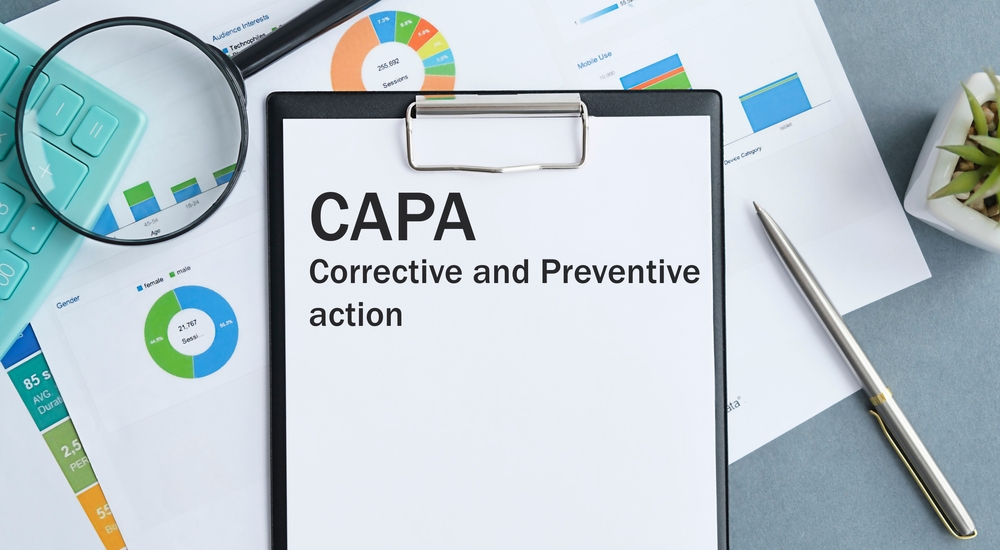May 14, 2025
In Part I of our Human Factors in CAPA series, we talked about employee engagement and its importance to a strong CAPA program. Today, we’re shifting gears to explore another essential human factor in the CAPA process: accountability.
Accountability is the backbone of the CAPA process. Without it, people don’t follow through on action items or don’t take ownership of quality issues—and that’s when problems start falling through the cracks.
But let’s be honest: most traditional approaches to ensuring accountability are driven from the top, turning CAPA into a box-checking exercise.
Below, we explore why accountability is so important, why traditional tactics don’t work and outside-the-box ideas for boosting CAPA accountability.
Read Now: Human Factors in CAPA, Part I: How to Improve Employee Engagement
Why Accountability Is Critical in CAPA
Why is accountability so critical to a successful CAPA program?
- It creates ownership, which leads to higher quality work.
- It clarifies roles by preventing confusion about who’s responsible for which tasks.
- It drives transparency through clear documentation of who completed what, when, and how.
- It improves timeliness, since people who are held accountable are more likely to meet deadlines.
- It builds a culture of continuous improvement that encourages learning from mistakes and pushing to get better.
Why Traditional Accountability Tactics Fall Short
Most quality leaders focus on shepherding their team through the CAPA process by setting deadlines and holding periodic CAPA reviews. Here’s why those don’t deliver lasting accountability:
- Setting Deadlines for Each Step: Maybe you break the CAPA process into milestones, staying organized with reminders to keep everything on track. While this is necessary, it removes the human element. CAPA becomes a mindless exercise where your teams are more concerned with checking the box than engaging in the process
- CAPA Review Meetings: It’s common to hold weekly or monthly meetings to review open items to encourage collaboration and communication. In reality, they often end up rehashing information everyone already knows rather than driving engagement around new solutions. In other words, it becomes one of those meetings that could have been an email.
Creative Strategies That Foster True Accountability
With the right approach, creating more accountability around CAPAs doesn’t have to be painful. Let’s look at a few outside-the-box tactics that can help your team take ownership—and actually enjoy the process along the way.
Accountability Buddies
It sounds a little cheesy, but think about when you start a new workout habit. You’re way more likely to stick with it when you’ve got a gym buddy, and CAPA is no different.
In one organization, I paired employees together as accountability buddies to check in on progress, bounce ideas around, and keep things from falling through the cracks. These weren’t random pairings—we tried to match people up based on skill sets or job functions so there was real value in the collaboration.
To keep things light, we turned it into a game. Missed a check-in? Your buddy might assign a fun “penalty,” like buying them lunch. Hit a milestone? That could mean a small reward—company swag, small gift cards, whatever fits your budget.
The CAPA Progress System
This idea came from the safety team at one of my former companies. They had a “days without safety incidents” board, so I thought—why not do the same for CAPA?
So we built a real-time CAPA leaderboard where everyone could see how their department ranked compared to others. Each department came up with its own team name, things like “The Solution Squad” and “Risk Busters.”
Teams got points on the board for:
- Closing a CAPA or hitting a deadline
- Coming up with new preventive actions
- Identifying opportunities for improvement
- Creative problem-solving
We had some weeks where the only prize was bragging rights. Other times, there were small prizes for the top team. Either way, the visibility created natural accountability—and a little friendly competition never hurt.
Themed CAPA Teams & Mini Challenges
Instead of holding dry CAPA follow-up meetings, I ran them like mini competitions.
Let’s say one week I was meeting with the production team. We’d pick one or two open issues and turn the meeting into a race against the clock to move it forward. The goal wasn’t to solve everything in 30 minutes, as that’s obviously not enough time to solve a complex problem. But even if we made progress on an investigation or developing part of the CAPA plan, that counted for points.
You can get as creative as you want with this, such as adding mini quizzes or side challenges. Anything to get people thinking creatively and working together. It works—and makes the process something people want to participate in.
Conclusion
The best part about these strategies is that they don’t require a big budget or major process overhaul. The key is consistency and visibility, which is easier to maintain with a system like AssurX that clearly shows where every CAPA stands, who’s responsible, and what’s next.
Combine that with a little creativity and team engagement, and CAPA stops being a chore. It becomes a shared commitment, where people take pride in solving problems together.
Learn how to streamline your CAPA process with AssurX Corrective and Preventive Action (CAPA)
About the Author
Stephanie Ojeda is Director of Product Management for the Life Sciences industry at AssurX. Stephanie brings more than 15 years of leading quality assurance functions in a variety of industries, including pharmaceutical, biotech, medical device, food & beverage, and manufacturing.


